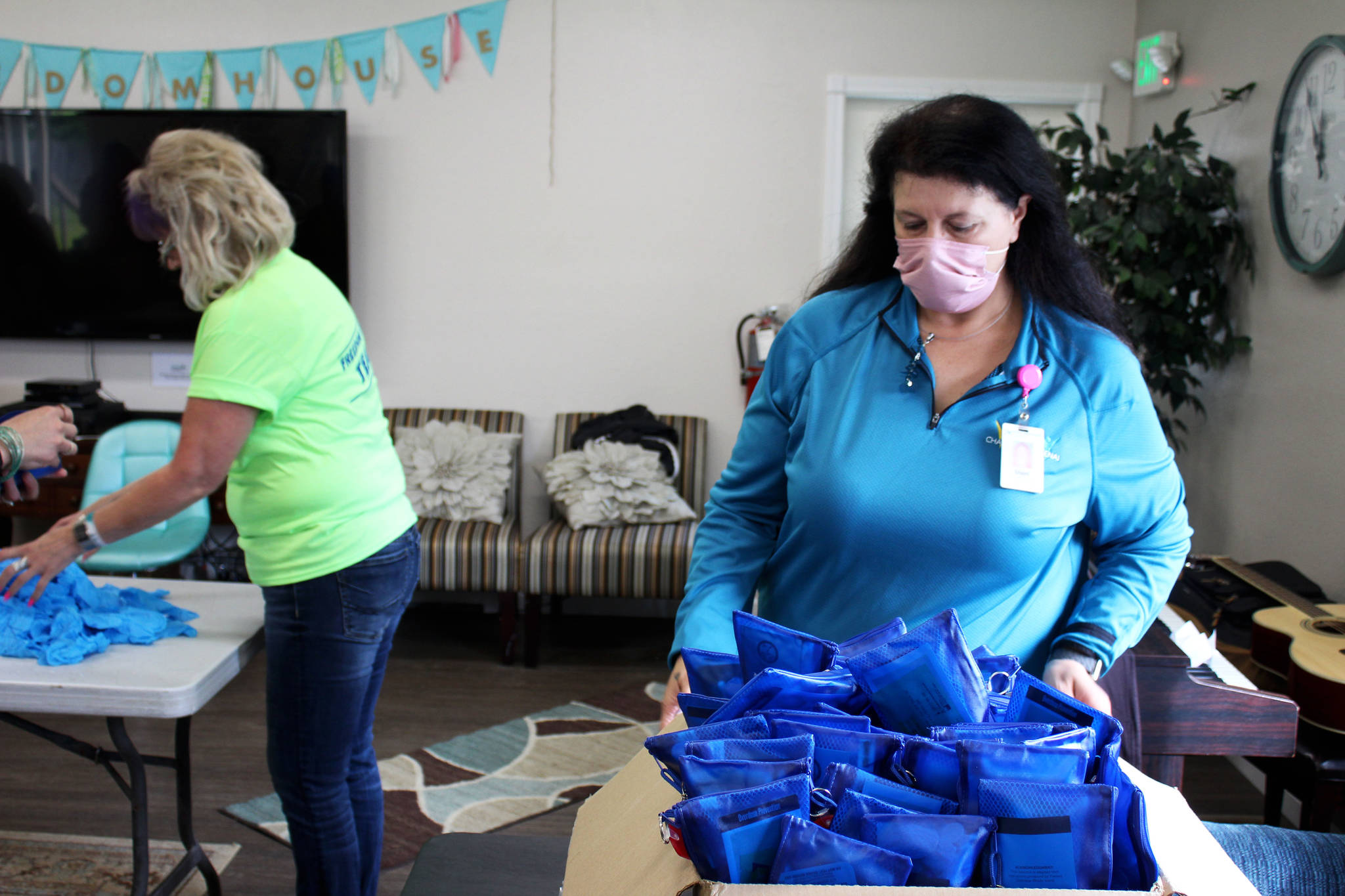“Overdoses are preventable.”
That was the message Shari Conner, a coalition coordinator for Change 4 the Kenai, sought to impart during a community event held Thursday at Freedom House in Soldotna.
The event explained how to administer Narcan and included the assembly of free Narcan kits by attendees. Narcan is a brand name version of the medication naloxone that is used in the event of an opioid overdose. It comes in the form of a nasal spray.
The National Institutes of Health describes naloxone as an “opioid antagonist,” meaning it attaches to opioid receptors and reverses and blocks the effects of other opioids.
Conner, who also works at Central Peninsula Hospital, said to think of opioids like tiny golf balls and someone’s neuron receptors like golf tees. As long as the opioid is active, it sits on the “tee” of someone’s receptors. When the opioid dies, it falls off the receptor and new opioids stick on them.
“The more opioids that are on your receptors, the more slowed down your central nervous system is until it goes to sleep and doesn’t work any longer,” Conner said.
Naloxone knocks all the opioids off their receptor tees.
The drug only has a half-life of about 30 minutes, however. Once it starts dying, opioids rush to fill those tees back up. That’s why it’s so important for the person responding to the overdose to call 911.
But how can you tell if someone has overdosed? According to the U.S. Centers for Disease Control and Prevention, signs of an opioid overdose include loss of consciousness, slow or shallow breathing, pale or blue skin, a limp body and constricted pupils, among others. The CDC instructs that if you find someone who you think is overdosing, call 911 immediately.
If the person is not responsive, Conner said to try and rouse them. That may include yelling the person’s name and administering a sternal rub, which involves rubbing your knuckles hard against the sternum of the person who is unresponsive. Then, move to naloxone. To administer Narcan, push the plunger into the nostril of the person who is unresponsive.
“They should immediately respond,” Conner said.
If they don’t, administer another dose. If they still do not respond, begin CPR and chest compressions, which should be administered to the beat of “Staying Alive” by the Bee Gees, Conner said.
Once someone regains consciousness, they may try to leave. Conner said it’s important that people do everything they can to stay with them, including following the person who has regained consciousness and telling emergency personnel where they are.
“The important part is to get those medical professionals there who … have lots more tools than you do to keep people alive,” Conner said.
If nothing else, Conner said, the information people should take away from the seminar is to call 911, always.
“Calling 911 helps save someone’s life,” Conner said.
One of the biggest hurdles in combating addiction, Conner said, is stigma. Normalizing conversations about things like Narcan kits, whether that’s at the doctor’s office when someone is being prescribed opioids or picking a kit up at the pharmacy, is one way to overcome that.
“Addiction is part of our nation if 80,000 people are dying from just opioid overdose,” she said.
The more normalized conversations about addiction and treatment become, Conner said, the less likely someone is to become a statistic.
Event attendees were invited to help assemble Narcan kits using supplies laid out on a table in the middle of the room following Conner’s presentation.
Included in each kit are two Narcan nasal sprays, a face shield to be used during CPR, a fentanyl test strip, two gloves and instructions on how to administer the nasal spray and test strip. Conner said they had the resources Thursday to assemble 500 kits, which she will be able to distribute throughout the community.
A 20-minute course explaining how to administer naloxone can be accessed at getnaloxonenow.org. More information about Change 4 the Kenai can be found at connectkenai.org.
Reach reporter Ashlyn O’Hara at ashlyn.ohara@peninsulaclarion.com.

